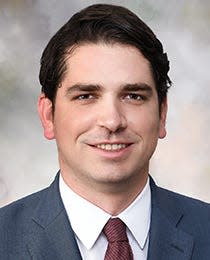Many treatment options exist for spinal stenosis
Spinal stenosis, coined from the Greek term "stenos," which means to narrow, refers to narrowing of the spinal canal that holds the nerves and the spinal cord. When this occurs, pressure can develop on either the spinal cord, the nerves, or both, and can lead to a variety of symptoms.
Spinal stenosis can be seen anywhere in the spine but is most found in the neck (cervical spine) or low back (lumbar spine). It is most commonly caused by arthritis, or wear and tear of the spine. As bone spurs develop, the space between the bones decreases (“bone on bone arthritis”) and disc bulges occur. The spinal canal becomes narrowed and leads to pressure on the nerves and spinal cord.

Signs and symptoms of spinal stenosis depend on where it occurs and what structures are “pinched.” If a single nerve is pinched as it comes off of the spinal cord, it may lead to severe pain, numbness, or weakness on one limb (such as the arm if it is in the neck, or the leg if it is in the back). If the pressure is directly on the spinal cord, it may lead to more vague symptoms, such as numbness throughout your hands and feet, difficulty walking, difficulty with hand function, and difficulty with balance and coordination.
The good news is that spinal stenosis often responds to nonsurgical treatment options. A great place to start is with medications, such as ibuprofen and Tylenol. Physical therapy can also be extremely helpful, as strengthening the core muscles around the spine can take a lot of stress off spines with significant arthritis and degeneration. Interventional procedures such as steroid injections can also provide relief if physical therapy and medications are not effective.
Patients who continue to have pain after trying all of these options may be a candidate for surgery. It is important to note that the primary goal of spine surgery is to alleviate arm and leg pain that is caused by pinched nerves. This can be done through a variety of techniques, including taking pressure off the nerves alone (called a laminectomy), removing a herniated disc (discectomy), performing a spinal fusion, and even newer techniques such as disc replacements.
With advances in recent technology, we have also developed newer and less invasive techniques to achieve our surgical goals, such as minimally invasive and robotic spine surgery. While surgery can certainly be effective in the right patient, most patients with spinal stenosis never have to undergo surgery and can return to their prior level of function.
Eren Kuris, M.D., is a spine surgeon with the Lifespan Orthopedics Institute and University Orthopedics who sees patients at Newport Hospital. He is an assistant professor of orthopedics at the Warren Alpert Medical School of Brown University. Health Matters appears monthly on newportri.com and in The Daily News.
This article originally appeared on Newport Daily News: Many treatment options exist for spinal stenosis
